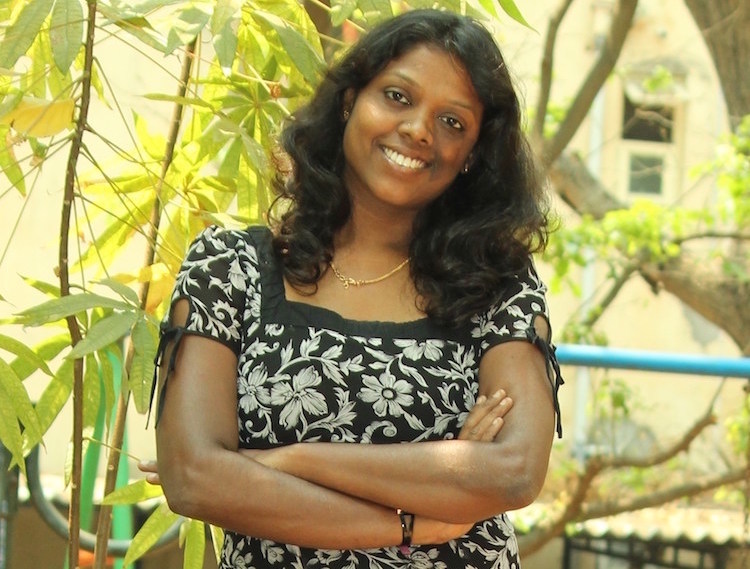By Jeya Rani*
CHENNAI (IDN) – Even as you read this whever you are, somewhere in India someone is being killed or raped, humiliated or outraged, just because she or he was born in a lower caste (known as Dalit).
The ‘not so changing’ statistics of National Crime Records Bureau say that a Dalit is assaulted every two hours in India. At least three Dalit women are raped every 24 hours. Two Dalits are killed every 24 hours. Two Dalit houses are burnt down.
There is no dearth of breaking news or good TRP ratings in reporting atrocities against Dalits across India. But, why are these stories not getting the coverage it deserves in the country often touted as the world’s biggest democracy?.
In an era where violence incites more sensationalism than a porn video, commercialising Dalit atrocities will only be beneficial. As long as the six lakh (600,000) villages in India are segregated as oors (where the dominant castes live) and cheris (where the Dalits live), as long as the hands of dominant castes write and enforce the living laws for Dalits through khap panchayats (people-elected village councils), there would be no scarcity of news related to violence against Dalits.
I wish India’s mainatream media could wake up to the reality, for us to really understand how bad the caste domination is in India today. We never get a complete idea about what really happens in terms of caste atrocities throughout the country. It is like blind people touching the elephant. I believe the country’s indifference to the caste atrocities largely arises from this blind men and the elephant idea.
The thousands of print media houses and hundreds of television houses will always have something new to give their readers and viewers. But how does the media actually see the atrocities against Dalits? What is the space, in terms of percentage, given to violence on Dalits in a day, a week, a month and a year by the media houses?
Crimes against Dalits see a rise of 10-20% every year. In a just society, the media’s space to violence against Dalits should have correspondingly increased too. But has it happened? We all know it has not. Now let us understand why it has not happened.
Just like in a society where we have rigid caste hierarchies, the media and journalists too operate on the basis of caste hierarchies. The fourth pillar of democracy has come crumbling down under the pressure of caste hierarchies when it should have stood upright holding the torch of justice.
The mainstream media is not for the poor, not for the oppressed. It has carved its kingdom out of loyalty to the powers, to bureaucracy, to domination. Over 95% of owners of the mainstream media including print and television come from dominant caste backgrounds. About 70-80% of the topmost positions are occupied by dominant caste men. Dalits don’t even constitute 1% when it comes to deciding power in the country’s media.
English language media, once in a while, does carry news on caste atrocities. But the possibility of even carrying anything remotely connected to violence on Dalits is ruled out completely in the vernacular media. Dalit journalists invariably end up in the vernacular media due to various factors. These include family and societal factors.
Most Dalit journalists are first generation graduates. They lack the ‘desired colour’ and they lack proficiency in English. Vernacular media accommodates them but treats them badly. They are not considered on par with journalists from other communities when it is time for promotions or salary hikes. And this I also say from my own experience.
After ten years of media experience, the channel I worked for paid me a meagre Rs 18,000. I was a scriptwriter for a daily show, worked through days and nights and had earned respect for my work. But when it was time for salary hike, I did not even get a 100 rupee raise. A junior employee, with less work load, but obviously from a different caste, was given a greater hike. Her salary was Rs 40,000. This is what Dalits face in media. They have only two options: to shrink themselves to fit the space media offers them or to leave the profession altogether.
When I was a student of journalism, I had written a story on the struggle of Dalit labourers in Manjolai Tea Estate and the state violence against them, which resulted in 17 deaths.
The story had appeared in my university magazine and after that, I almost faced suspension. That was my first story and the experience fuelled my passion to write more against caste related atrocities. But when I transitioned to mainstream media looking for employment opportunities, I was in for a rude shock. There were two things that acted as speed breakers. For a vernacular journalist to go about working on socio-political stories was considered unwanted. Unless there is a mass murder, violence against Dalits was never taken into account. All my ideas for stories were trashed. I was seen as something of a rebel.
As soon as I began my career, in a matter of few months I ended up as a reporter for a women’s magazine. I suggested a serial on women panchayat presidents. The idea was trashed several times as not being fit for a women’s magazine, but I kept persisting. Finally when it was accepted I made a list of five leaders I could meet and set up my first meeting with Menaka. She was then a panchayat president with Oorapakkam panchayat in Kanchipuram district. I had no idea that she was a Dalit.
I had wanted to speak of the challenges she faced as a woman. Menaka was speaking about the challenges she faced as a Dalit. She told me the members of dominant caste never allowed her to sit in the chair meant for the panchayat president. She was receiving death threats. They wanted her to quit her post. She had filed a complaint against police station, but there was no action on her complaint.
After spending a day with her and gathering her experiences, I went back to the office next day and filed my story. It was trashed again. It was apparently not suitable for the magazine. My editor insisted I write recipes instead.
I distinctly remember the evening. Under huge mental pressure I was walking on the road contemplating if I should quit the job that wanted me to write only recipes. Something in the posters of the evening newspapers caught my eye. The posters screamed about the murder of a panchayat president and I was trembling when I bought the paper. My worst fears had come true. Menaka was murdered for sitting on the chair in the panchayat office.
I took the newspaper to my editor and fought with her. She was not even slightly rattled. All she would say was to finish my recipe assignment.
I went to Oorapakkam without my office’s permission that night and took part in Menaka’s funeral. After coming back to Chennai I spoke to the editor of an investigative magazine published by the same group and he agreed to publish Menaka’s interview. After all, it was her last interview before being murdered. It had news value now.
I couldn’t work in the group any longer. After much thought, I understood how the media worked. I need the economic independence of the mainstream job. And I need to take anti-caste journalism forward. I understood this is not possible in mainstream media. I made my space in the alternative media.
Dalit Murasu, a magazine with the sole aim of annihilating caste, became my forte. I wrote on caste issues that I could never write in the mainstream media. But I published them under different pseudonyms. My articles in Dalit Murasu over a span of 15 years have been published as Jaathiyatravalin Kural (the voice of a casteless woman) and have been well received.
This is my story. My personal story. I am aware that not all Dalit journalists are as lucky as I have been. Even if my ideas have been rejected in all editorial meetings, I kept suggesting ideas on caste atrocities. I made it a point to do so. I stopped worrying about what people would think of me. I reminded myself that my duty as a journalist was to be a voice to the voiceless. But if and when a Dalit journalist writes on Dalit issues or even speaks about it, their colleagues call it caste affinity or caste pride. How can a Dalit feel proud about her or his caste?
We should work on strategies that will bring more news on Dalit issues into our newsrooms. Journalist organisations should make just representation as one of their demands along with other rights. They should come forward to monitor violations against Dalit journalists and ensure action in the event of such violation. The field should become more open and independent for Dalit journalists. The workplace should offer them dignity and respect.
*Jeya Rani is a journalist for over 15 years from Tamil Nadu. She is currently the Lifestyles Editor for a leading Tamil daily in Chennai. [IDN-InDepthNews – 27 December 2016]
Photo: Jeya Rani. Courtesy: Neha Dixit


